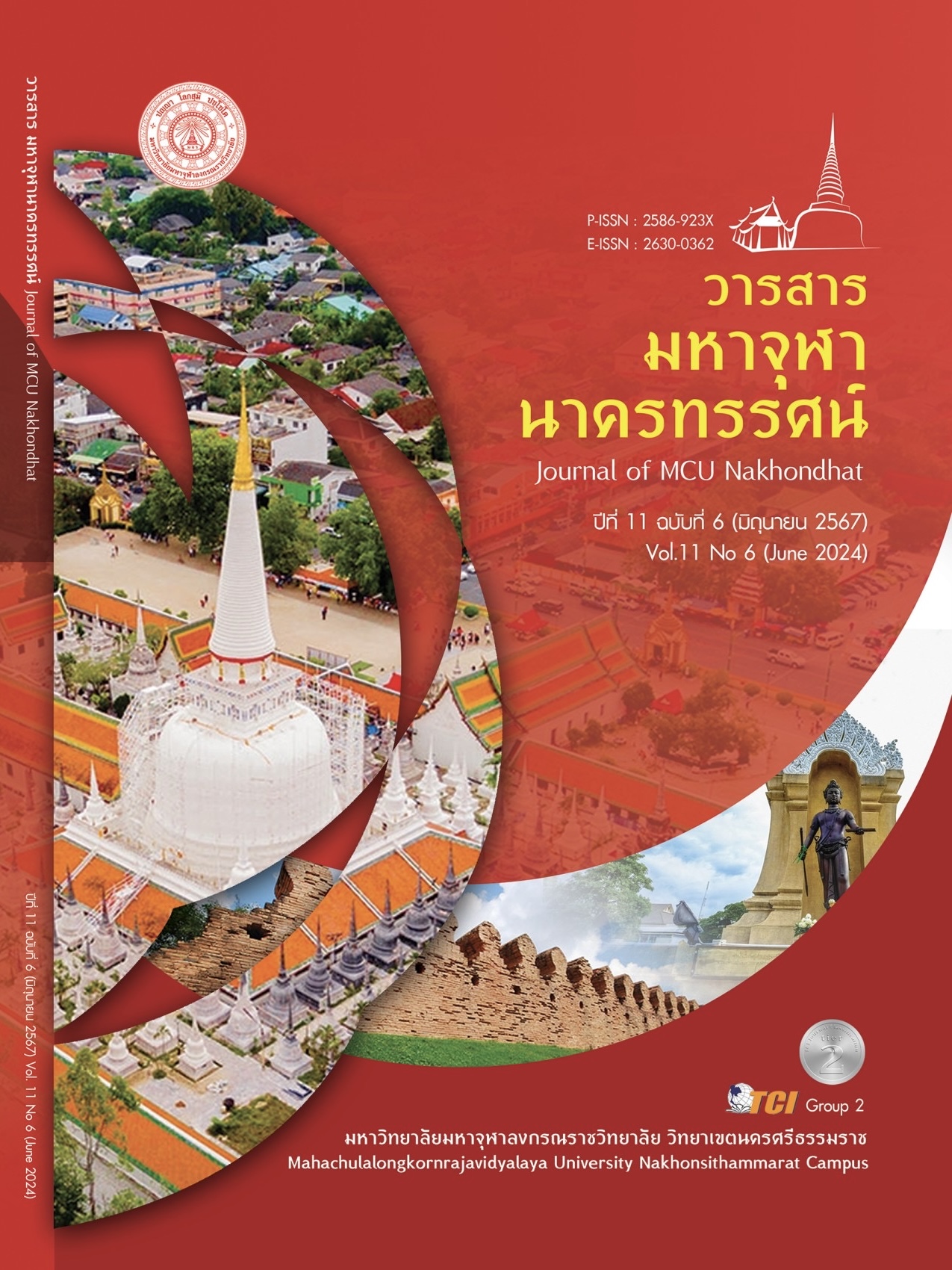THE DEVELOPMENT OF A SEAMLESS MODEL FOR PEDIATRIC THALASSEMIA CARE
Main Article Content
Abstract
The purposes of this research were to 1) Study the situation of caring for children with thalassemia. 2) Develop a seamless care model for pediatric thalassemia patients and 3) Study the results of the seamless care model for children with thalassemia. Using the research and development model. The sample group studied the purposive selection was 42 pediatric thalassemia and their caregivers. The research tools used were focus group guidelines. A seamless model for pediatric thalassemia care. Knowledge assessment about thalassemia disease, self-care behavior questionnaire, quality of life questionnaire, health status record form and satisfaction assessment form. Qualitative data were analyzed by content analysis and summarize. Quantitative data were analyzed by using frequency distribution, percentage, mean, standard deviation and pair t-test. The research results found that The seamless model for pediatric thalassemia care consists of 1) The one stop service thalassemia clinic with clinic nurses, 2) Prepare a patient identification book. 3) Prepare a thalassemia disease manual. 4) Organize training to provide knowledge. 5) Develop discharge planning tools. 6) Set up a group line and forward follow-up by phone. 7) Conduct home visits. and 8) There was supervision of the use of the model. Results after implementing the model found that 1) Children with thalassemia The experimental group had an average knowledge score, self-care behavior and quality of life were higher than before the experiment, and higher than the control group Statistically significant. 2) Regarding caregivers, the experimental group had higher mean knowledge and satisfaction scores than before the experiment, and higher than the control group with statistical significance and 3) Health status, the experimental group had significantly lower mean hematocrit and serum ferritin scores than the control group.
Article Details

This work is licensed under a Creative Commons Attribution-NonCommercial-NoDerivatives 4.0 International License.
References
กรมอนามัย กระทรวงสาธารณสุข. (2567). สัมมนาวิชาการธาลัสซีเมียแห่งชาติ ครั้งที่ 25. เรียกใช้เมื่อ 30 มีนาคม 2567 จาก https://www.hfocus.org/content/2024/03/30093
จันทร์เพ็ญ ประโยงค์ และคณะ. (2563). การพัฒนารูปแบบการดูแลผู้ป่วยโรคเรื้อรังโดยการมีส่วนร่วมของชุมชนในอำเภอบ้านธิ จังหวัดลำพูน. วารสารวิชาการสาธารณสุข, 29(5), 803-812.
ประกริต รัชวัตร์ และนัยนา ภูลม. (2565). ปัจจัยที่มีอิทธิพลต่อคุณภาพชีวิตผู้ป่วยเด็กธาลัสซีเมีย. วารสารวิจัยและพัฒนาระบบสุขภาพ, 15(1), 334-349.
พนารัตน์ มัชปะโม. (2563). การพัฒนารูปแบบการดูแลผู้ป่วยเด็กธาลัสซีเมียชนิดรุนแรง หรือชนิดพึ่งพาเลือด โรงพยาบาลวาปีปทุม จังหวัดมหาสารคาม. วารสารวิชาการสำนักงานสาธารณสุขจังหวัดมหาสารคาม, 4(8), 234-243.
พุทธวร พิลาฤทธิ์ และศุภรดา ภาแสนทรัพย์. (2566). การพัฒนารูปแบบการดูแลผู้ป่วยเด็กธาลัสซีเมียโรงพยาบาลโพนพิสัย จังหวัดหนองคาย. วารสารวิจัยสุขภาพโรงพยาบาลและชุมชน, 1(3), 138-150.
เพ็ญศิริ พันธุวงศ์. (2566). คุณภาพชีวิตในผู้ป่วยเด็กโรคธาลัสซีเมียที่เข้ารับเลือดเป็นประจำในโรงพยาบาลทุ่งสงและโรงพยาบาลเครือข่าย. มหาราชนครศรีธรรมราชเวชสาร, 6(2), 90-101.
มณี อาภานันทิกุล. (2563). การวิจัยปรากฏการณ์วิทยา: การประยุกต์ใช้ในการวิจัยทางการพยาบาล. กรุงเทพมหานคร: มหาวิทยาลัยมหิดล.
โรงพยาบาลชัยนาทนเรนทร. (2565). สถิติผู้ป่วยเด็กธาลัสซีเมีย. ชัยนาท: โรงพยาบาลชัยนาทนเรนทร.
โรงพยาบาลชัยนาทนเรนทร. (2566). รายงานประจำปี. ชัยนาท: โรงพยาบาลชัยนาทนเรนทร.
ศิริยุพา สนั่นเรืองศักดิ์และคณะ. (2563). รูปแบบการจัดการตนเองของเด็กที่ป่วยด้วยโรคธาลัสซีเมีย. วารสารคณะพยาบาลศาสตร์ มหาวิทยาลัยบูรพา, 28(2), 27-39.
อภิชญา อารีเอื้อและคณะ. (2560). รูปแบบการปรับปรุงคุณภาพการดูแลในสถานบริการสำหรับผู้ป่วยเรื้อรัง: กรณีคลินิกเด็กธาลัสซีเมีย โรงพยาบาลกาฬสินธุ์. วารสารคณะพยาบาลศาสตร์ มหาวิทยาลัยบูรพา, 25(4), 42-50.
Kemmis, K. & Mc Taggart, R. (2000). Participatory action research: Handbook of quality Research. London: Sage.
Varni, J. W. (2019). The PedsQL Measure-ment Model for the Pediatric Quality of Life Inventory. Retrieved March 20, 2024, from http://www.pedsql.org/index.html


